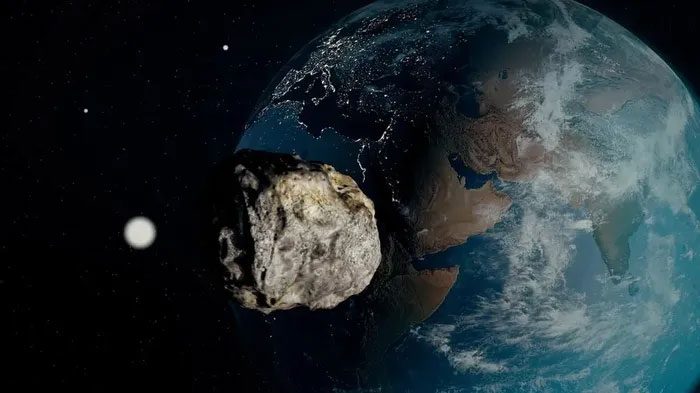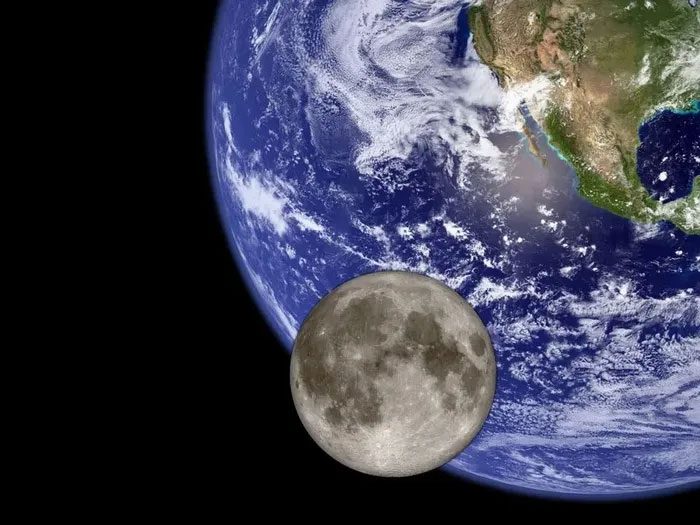An asteroid has been captured by Earth’s gravitational pull and has become a second moon; however, this small moon will only be a companion to Earth for a short time before continuing its journey through space.
On September 29, as it passed by Earth, an asteroid was gravitationally captured and became the second natural satellite orbiting our planet.
This asteroid is named 2024 PT5 and is about the size of a 10-meter-long bus. This small “moon” will orbit Earth for approximately 57 days before breaking free on November 25 to continue its trajectory through space.

The asteroid 2024 PT5 will orbit Earth for about two months, temporarily becoming the second “moon.” (Source: USA Today)
While 2024 PT5 is notable in that it is slightly larger and will remain in Earth’s orbit longer than other objects, its time as a companion will be just a minor event in the life cycle of our planet.
Definition of a Moon
Asteroids have always quietly passed by Earth. Most of these small objects enter and leave Earth’s orbit without causing much impact, while larger objects tend to appear only once every few million years.
Like most celestial bodies in the Solar System, asteroids are propelled through space by the gravitational pull of the Sun.
Although 2024 PT5 is very small, that does not mean it is not truly considered a “moon.” Regardless of the mass, composition, or shape of the asteroid, whether it can be declared a “moon” depends on whether it begins to orbit another planet.
For example, the Moon orbits Earth in an elliptical path, taking about a month to complete one orbit. During this cycle, the Moon’s gravity affects Earth, shifting its mass and distorting its shape into an oval.
This process influences tidal formation and has significant impacts on life on Earth, such as supporting marine ecosystems and the reproductive cycles of many marine animals. In contrast, 2024 PT5 will not exist long enough to cause such extensive effects.
Unveiling the Importance of 2024 PT5 Research
According to astronomers, Earth is unlikely to gain another large or significant natural satellite like the Moon anytime soon.
If in a stable configuration, having two moons of comparable size would completely change ocean tides and could alter what scientists know about astronomical history, including how those moons formed. However, once again, that is almost certainly not going to happen any time soon.

In the long run, the Moon remains Earth’s only natural satellite. (Source: NASA)
So why is 2024 PT5 receiving so much attention? Andrew Rivkin, a planetary astronomer at the Johns Hopkins University Applied Physics Laboratory in the U.S., states that the appearance of this asteroid marks one of the first times scientists could predict the presence of a small “moon.”
Rivkin is the lead researcher in the recent Double Asteroid Redirection Test (DART) mission by NASA, a project aimed at demonstrating technology to deflect an asteroid as part of humanity’s larger ambition to protect Earth. DART has shown for the first time that a technology created by humans can change the position of an object in space.
According to astronomers’ calculations, one of the largest objects likely to fly near Earth is a 305-meter-wide asteroid named Apophis, expected to pass by our planet in April 2029.
There is very little chance this asteroid will be pulled into Earth’s orbit because it will pass by our planet too quickly, but at an extremely close distance—only 1/10 the distance from Earth to the Moon—enough for people on Earth to see it with the naked eye.
However, while Apophis’s visit may evoke more fear than that of 2024 PT5, it will undoubtedly be an exciting event for astronomers.





















































